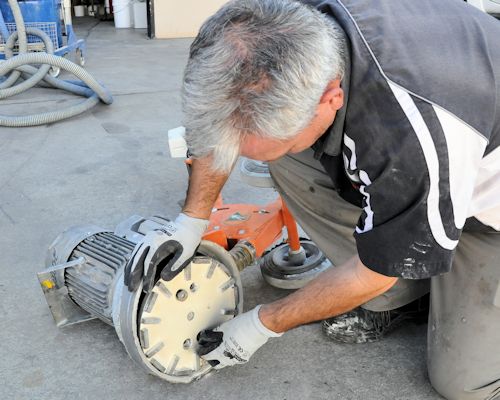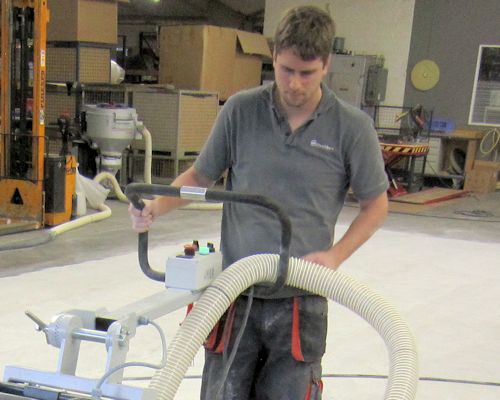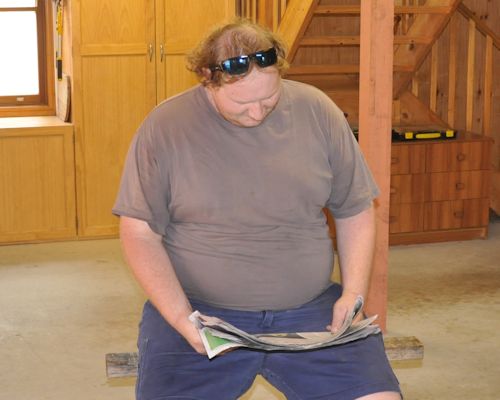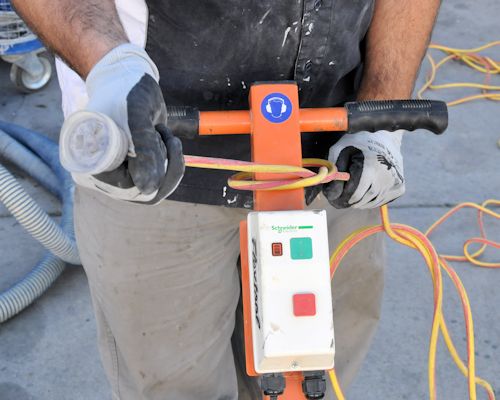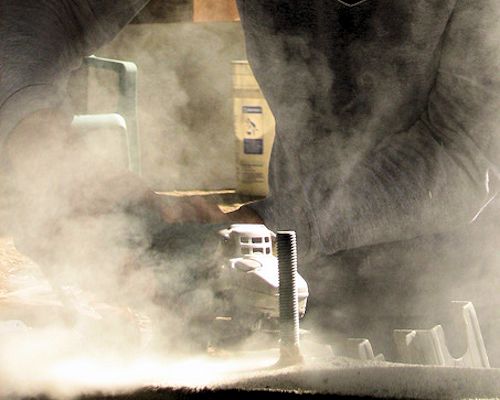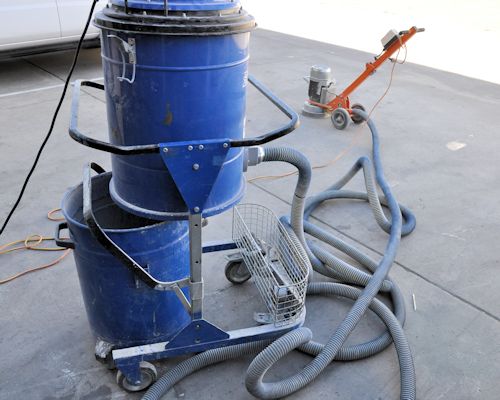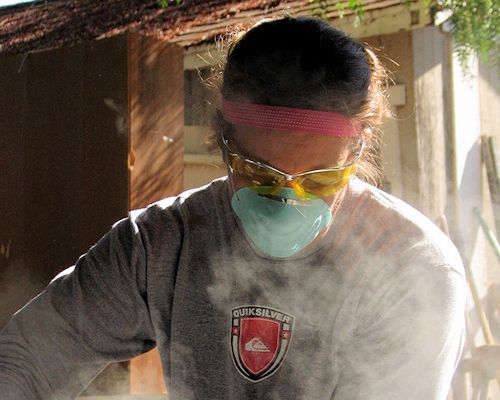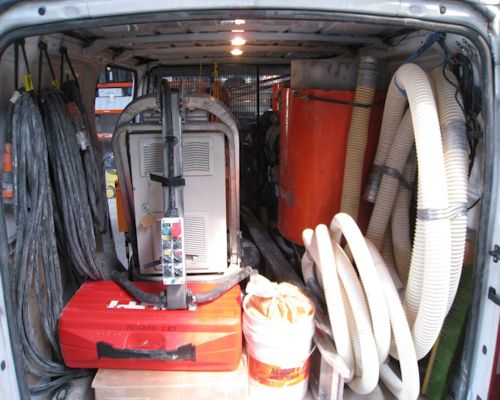Health and safety
 Audio for slide 3 (mp3 |6|KB)
Audio for slide 3 (mp3 |6|KB)
- Check that the environment you're going to use the machine in is safe - in other words, carry out a risk assessment.
The sorts of things you should look for include:- wet environments which might cause electrical short circuits
- cluttered or excessively dirty floors
- poorly lit areas
- other workers in the area.

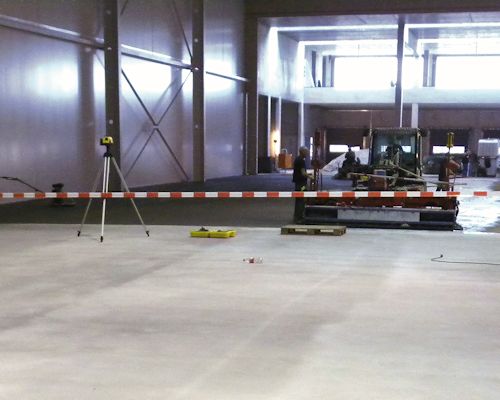 Audio for slide 4 (mp3 |6|KB)
Audio for slide 4 (mp3 |6|KB)
For more information about the risk assessment process, see: 'Managing risks' (in Working safely).

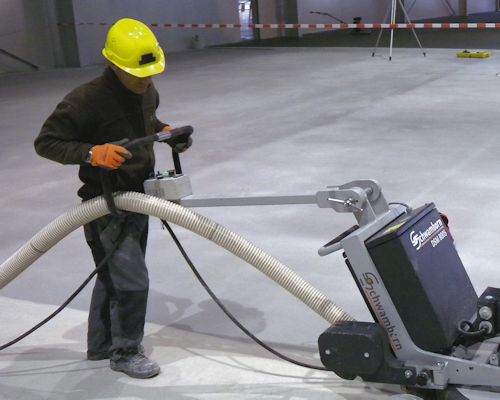 Audio for slide 5 (mp3 |6|KB)
Audio for slide 5 (mp3 |6|KB)
Setting up the machine
- Wear appropriate clothes and personal protective equipment.
Don't wear loose clothes that could get caught in moving parts.
Wear fully enclosed, non-slip shoes or boots.
Make sure your ear muffs or plugs are at the ready for when you start the machine. Depending on the job you're doing, you may also need gloves, safety glasses, dust mask and a hard hat.

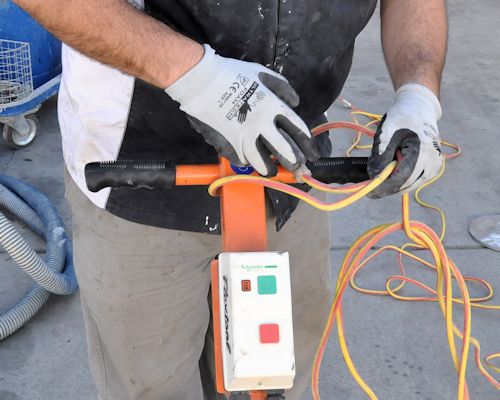 Audio for slide 6 (mp3 |6|KB)
Audio for slide 6 (mp3 |6|KB)
- Check that the accessories and attachments are properly fitted and that all guards and other safety devices are in place and working properly.
Before you inspect any parts, make sure the power is turned off and the lead unplugged from the power source.
Make sure the extension lead is heavy enough to take the current required.
Remember that the longer the lead, the heavier it will need to be to cope with the voltage drop over that distance.

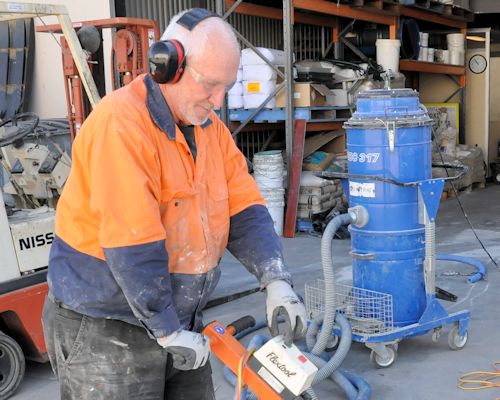 Audio for slide 7 (mp3 |6|KB)
Audio for slide 7 (mp3 |6|KB)
Operating the machine
- When you start up the machine, listen for unusual noises or vibrations.
If anything doesn't sound or feel right, turn the machine off straight away and look for the problem.
If you can't fix it on the spot, put a tag on the machine to indicate that it's out of order, and either tell your supervisor or take it to an authorised person for repair.

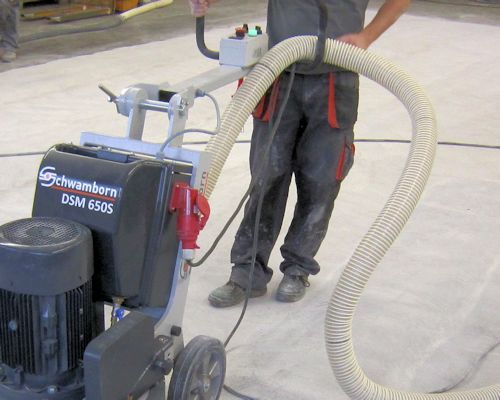 Audio for slide 11 (mp3 |6|KB)
Audio for slide 11 (mp3 |6|KB)
- Inspect the power lead and extension lead for damage before you put the machine away.
Also inspect other parts that may get damaged or wear out over time.
If anything needs repairing, tell your supervisor or take the machine to an authorised person.
Don't just pack it up and forget about the problem - because the problem will still be there when you go to use the machine next time.

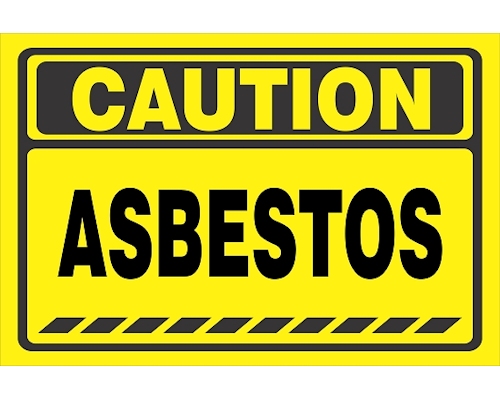 Audio for slide 15 (mp3 |6|KB)
Audio for slide 15 (mp3 |6|KB)
If you don't know what the floor surface is composed of, or you suspect it might contain asbestos, don't grind it.
We talked about the problem of asbestos and how to deal with it in the lessons shown below.
'Preparing concrete substrates' (in Subfloor coatings and toppings)
'Assessing the subfloor' - Learning activity (in Lay flat vinyl).

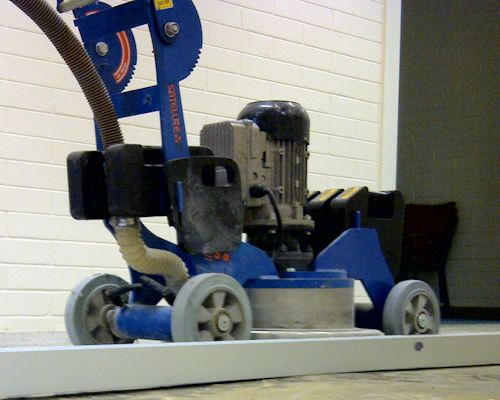 Audio for slide 16 (mp3 |6|KB)
Audio for slide 16 (mp3 |6|KB)
Manual handling
Grinding machines can be very heavy.
Always use good lifting practices and get an offsider if you need extra help.
We talked about good manual handling techniques and ways to avoid muscle and joint injuries in the lesson: 'Manual handling' in Working safely.
You should go back to that unit and revise the details if you can't remember the principles of good manual handling.

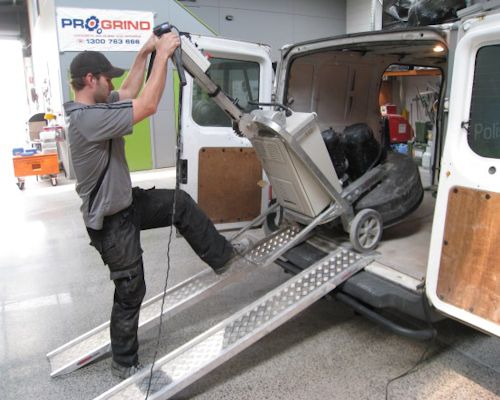 Audio for slide 17 (mp3 |6|KB)
Audio for slide 17 (mp3 |6|KB)
Most operators use aluminium loading ramps and a winch.
The machine will have a hook or winching point for connecting the cable to.
It's important that you use this point, so you don't damage any fragile parts of the machine.

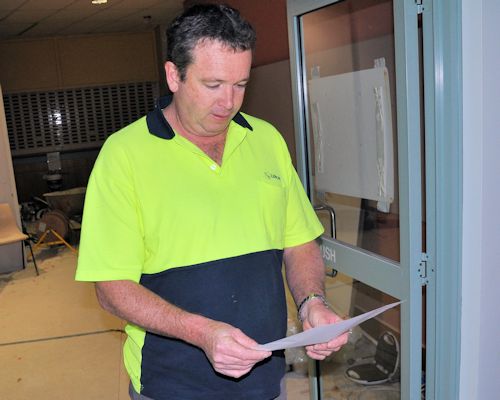 Audio for slide 19 (mp3 |6|KB)
Audio for slide 19 (mp3 |6|KB)
Safe operating procedures
Most companies have a Safe Operating Procedure (SOP) for each piece of equipment their workers take on-site that is potentially hazardous.
They also generally complete a simple risk assessment before starting work at any new jobsite.
The link below will take you to a combined SOP and risk assessment form for a hand held grinder.
This has been developed by Epoxy Solutions, and is filled in by their workers each time they use the grinder on-site.






